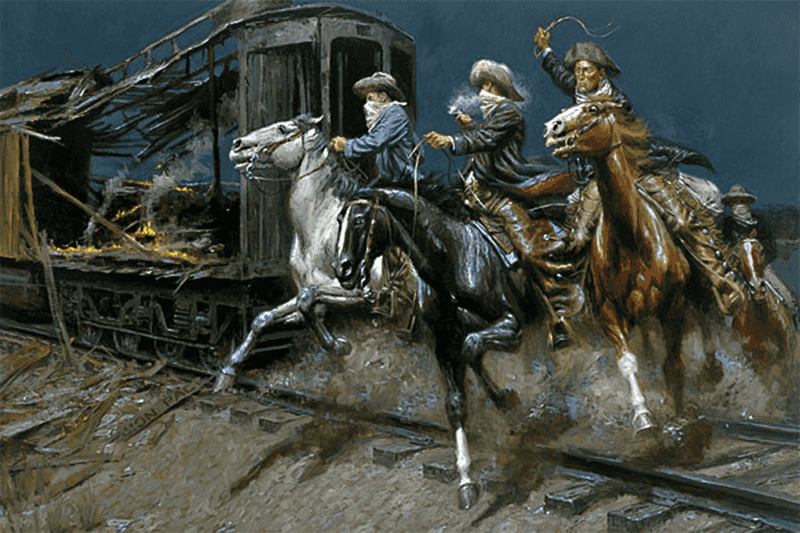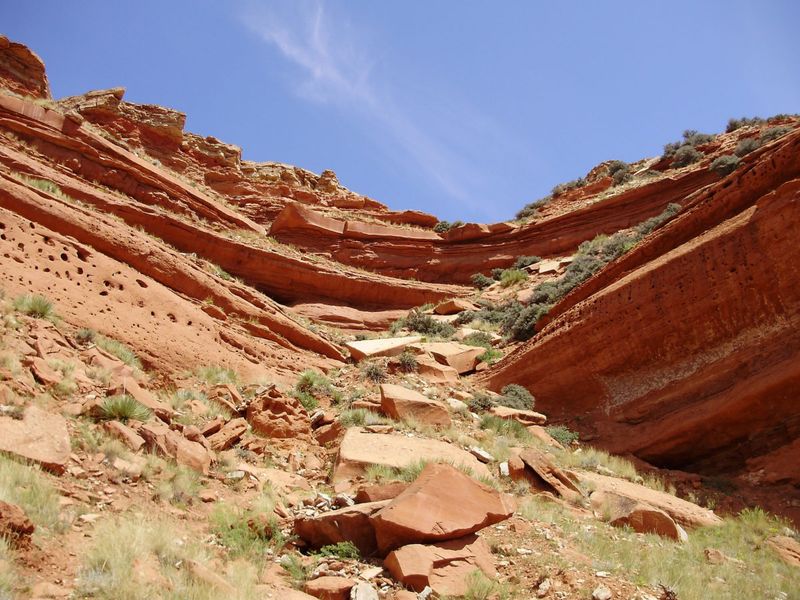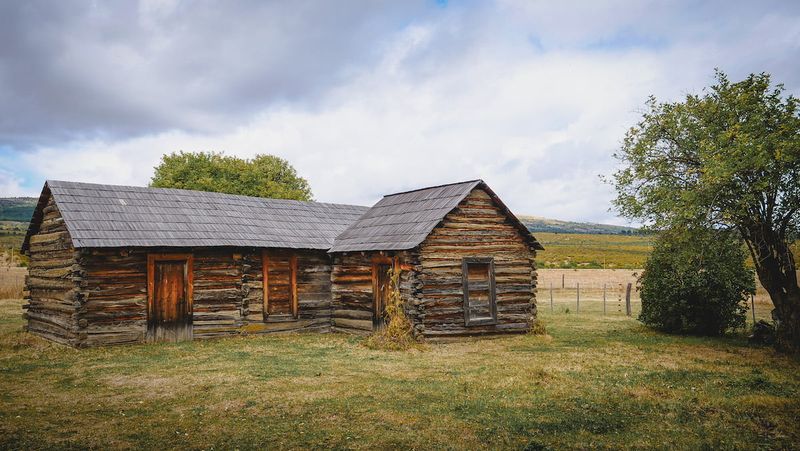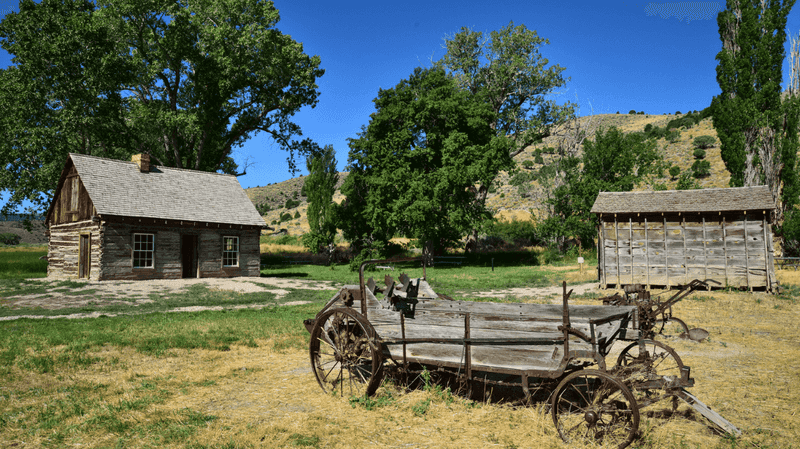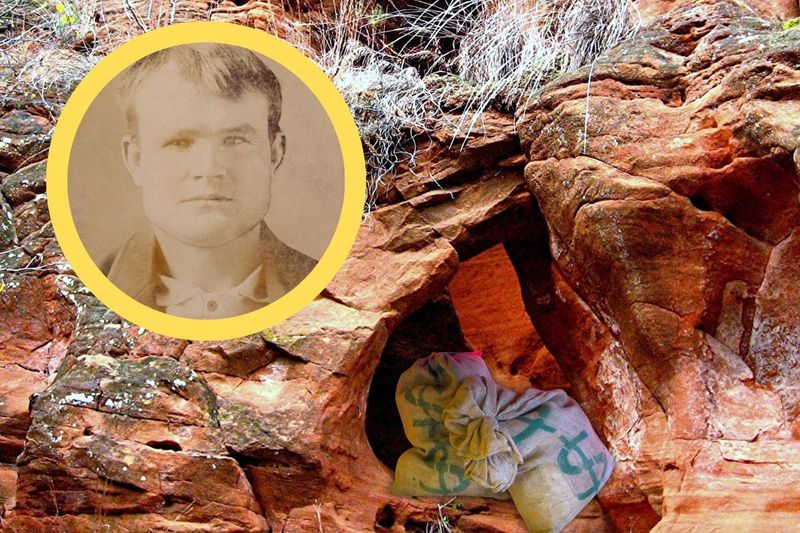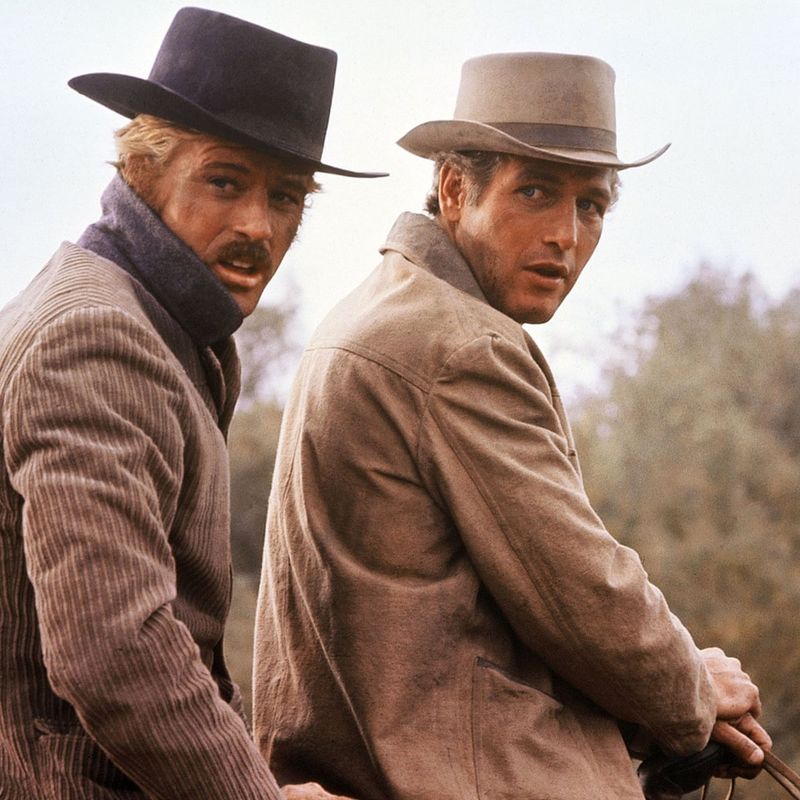Butch Cassidy stands tall among America’s most famous outlaws, a man whose life blurred the line between criminal and folk hero. His daring heists, charismatic personality, and mysterious fate have captivated our imagination for over a century.
While Hollywood has painted him as a charming rogue, the real Butch Cassidy carried many secrets to his grave – or did he?
1. The Man Behind the Mask: Robert LeRoy Parker
Long before he became the West’s most wanted outlaw, he was simply Robert LeRoy Parker, born to Mormon pioneers in Utah in 1866. His transformation began after working briefly as a butcher, where he earned the nickname “Butch.” The “Cassidy” came later, borrowed from Mike Cassidy, an older rustler who mentored young Robert in the ways of cattle theft. This complete identity change helped him separate his criminal activities from his family name. Parker’s devout parents never fully accepted his outlaw identity, holding out hope their son would someday return to the righteous path they had raised him on.
2. Mormon Roots and Moral Codes
Born into a devout Mormon household in Beaver, Utah, young Robert absorbed religious teachings that shaped his unique criminal code. His parents, Maximillian and Ann Parker, raised 13 children with strict Mormon values, never suspecting their son would become America’s most notorious train robber. Remarkably, despite his criminal career, Cassidy maintained certain moral boundaries. He reportedly never took a human life during his robberies, preferring careful planning over violence. Friends and fellow outlaws noted his peculiar habit of reading scripture during hideout downtime, a vestige of his religious upbringing that never fully left him.
3. The Rustler’s Apprenticeship
Cassidy’s criminal journey began not with dramatic bank heists but with cattle rustling across the Utah-Wyoming border. As a teenager working on ranches, he witnessed the bitter range wars between wealthy cattle barons and struggling homesteaders. His first brush with the law came at just 14 when he was caught stealing a pair of jeans from a closed shop—leaving an IOU note promising payment. Local rancher Mike Cassidy took the boy under his wing, teaching him to read brands, navigate wilderness trails, and evade posses. These early lessons in survival formed the foundation for his later success as an outlaw who could disappear into the landscape.
4. The Telluride Bank Job: Birth of a Legend
June 24, 1889 marked Cassidy’s transformation from small-time rustler to professional outlaw. The San Miguel Valley Bank in Telluride, Colorado became his first major target, selected after careful reconnaissance. Cassidy and three accomplices rode into town posing as miners, timing their robbery perfectly between guard shifts. They escaped with $21,000—equivalent to over $600,000 today—without firing a single shot. What made this heist legendary wasn’t just the take but the meticulous planning. Cassidy had positioned fresh horses at strategic points along their escape route, allowing the gang to outpace any pursuing lawmen through Colorado’s rugged mountain passes.
5. Assembling the Wild Bunch: America’s Most Wanted Gang
Cassidy didn’t just gather criminals—he assembled specialists with complementary skills. The Wild Bunch included Harry Longabaugh (the Sundance Kid) for his shooting prowess, Ben Kilpatrick (the Tall Texan) for his intimidating presence, and Kid Curry, the enforcer whose violent tendencies Cassidy carefully restrained. Unlike typical gangs, the Wild Bunch operated with military precision. Each member had specific roles during heists, from horse handling to explosives. Cassidy enforced strict rules: no unnecessary violence, equal division of spoils, and absolute loyalty. This professional approach made them the most successful—and elusive—outlaw gang in Western history, operating across seven states.
6. Lightning Strikes Twice: The Union Pacific Overland Flyer Robberies
Cassidy’s audacity peaked in 1899 when he targeted the Union Pacific Overland Flyer twice in just two months. The first robbery near Wilcox, Wyoming in June netted $30,000 in unsigned banknotes, which the gang meticulously laundered through friendly bankers. Rather than lying low, they struck again in August near Tipton, Wyoming. Railroad officials were stunned by this brazen follow-up, having just implemented new security measures. The gang’s method became their signature: dynamiting the express car with precisely calculated charges—enough to open the safe without destroying its contents. These twin heists prompted the Union Pacific to hire the Pinkerton Agency, beginning the relentless pursuit that would eventually force Cassidy from American soil.
7. The Gentleman Bandit’s Code
Unlike many outlaws of his era, Cassidy cultivated a reputation for avoiding bloodshed. While his associate Kid Curry had a lethal reputation, Cassidy himself is not conclusively linked to any killings during his criminal career. Victims often reported his surprisingly polite demeanor during robberies. One Wyoming bank teller recalled Cassidy apologizing for the inconvenience while emptying the vault. This gentlemanly approach wasn’t just moral—it was strategic. Cassidy understood that murder brought more determined pursuit and harsher consequences. His philosophy: “There’s more money in robbing banks than in killing people for it.” This code helped transform him from mere criminal to folk hero in the public imagination.
8. Wilderness Fortresses: The Hidden Hideout Network
Cassidy’s success relied heavily on a network of remote hideouts across the West. The infamous Hole-in-the-Wall in Wyoming featured natural stone walls creating a fortress accessible only through a narrow passage easily defended against lawmen. Robbers Roost in Utah offered similar protection—a maze of canyons where Cassidy reportedly built cabins with escape tunnels and lookout posts. These weren’t just hiding places but fully stocked compounds with food caches and fresh horses. The gang maintained relationships with isolated ranchers who provided supplies and information about pursuing posses. This wilderness support system allowed them to vanish after robberies, sometimes for months, before emerging for their next heist.
9. Hunted by the Pinkertons: America’s First Private Detectives
The Pinkerton National Detective Agency deployed their best operatives against Cassidy’s gang, creating unprecedented wanted posters with actual photographs rather than sketches. Chief investigator Charlie Siringo spent years infiltrating outlaw communities, gathering intelligence on Cassidy’s movements. Pinkerton agents pioneered modern manhunting techniques, including telegraph networks to coordinate pursuits across state lines. They maintained files documenting Cassidy’s habits, associates, and even his favorite foods and brands of whiskey. This relentless pressure forced the gang to constantly relocate. By 1901, Cassidy reportedly complained to a friend: “The Pinkertons never sleep.” Their pursuit ultimately drove him to make the fateful decision to flee the country altogether.
10. South American Escape: The Trio’s New Beginning
February 1901 marked a turning point when Cassidy, Sundance, and Etta Place boarded a British steamer in New York bound for Argentina. They arrived in Buenos Aires as wealthy cattle investors, using the aliases James Ryan and Harry Place. The trio purchased a 15,000-acre ranch in Cholila, Patagonia, raising cattle and building a four-room log cabin that still stands today. For nearly five years, they lived as respectable ranchers, hosting barbecues for neighbors who never suspected their true identities. Etta, whose relationship with Sundance remains mysterious, moved between Argentina and the United States, sometimes carrying correspondence to Cassidy’s family in Utah—coded messages that revealed his homesickness for the American West.
11. The Failed Reformation: Ranching in Patagonia
Cassidy genuinely attempted to reform in Argentina, investing robbery proceeds into legitimate ranching. Their Cholila property featured branded cattle, fruit orchards, and even vegetable gardens—suggesting sincere intentions to build a new life. Financial ledgers discovered decades later revealed meticulous bookkeeping, showing Cassidy’s surprising aptitude for legitimate business. Local records indicate he paid taxes and participated in community affairs. The dream collapsed when a visiting American recognized the infamous outlaws. Though Argentine authorities initially ignored Pinkerton reports about the foreigners’ true identities, mounting pressure and financial struggles eventually forced them to sell the ranch in 1905 and return to crime—this time targeting banks and payroll shipments across South America.
12. The Bolivian Finale: Last Stand at San Vicente
By November 1908, Cassidy and Sundance had drifted to the mining regions of southern Bolivia. Near the village of San Vicente, they allegedly robbed a mining company payroll, making off with several thousand dollars. Three days later, on November 6, two Americans matching their descriptions stayed at a small boarding house in San Vicente. When local authorities arrived investigating the robbery, a fierce gunfight erupted. According to official reports, the cornered bandits fought until their ammunition ran low. Rather than face capture, one reportedly shot his wounded companion before turning the gun on himself. Bolivian officials identified the bodies as Cassidy and Sundance, but they were buried in unmarked graves before American authorities could confirm their identities.
13. The Phantom Returns: Survival Theories and Sightings
Dozens of credible witnesses claimed to have encountered Cassidy years after his supposed death. His sister Lula Parker Betenson insisted he visited the family home in Utah in 1925, telling tales of his South American adventures and subsequent escape. A Wyoming rancher named William Phillips, who died in 1937, was suspected to be Cassidy living under an alias. Phillips demonstrated intimate knowledge of the Wild Bunch’s operations that only an insider could possess. Forensic historians point to troubling inconsistencies in the Bolivian death report—the bodies were buried before American officials could examine them, and descriptions of the deceased men didn’t match Cassidy and Sundance’s physical characteristics. These discrepancies have fueled a century of speculation about the outlaw’s true fate.
14. The Hidden Fortune: Cassidy’s Buried Treasure
Treasure hunters have spent decades searching for Cassidy’s rumored hidden loot. According to local legends, he buried substantial cash near the Robbers Roost hideout before fleeing to South America. In 1910, a sheepherder discovered $20,000 in paper currency hidden in a cave near the Utah-Colorado border. The decomposing bills matched the serial numbers from a Wyoming bank robbery attributed to the Wild Bunch. Cassidy reportedly confided in a childhood friend that he had stashed over $30,000 in gold coins beneath a large rock formation with a distinctive crack resembling a lightning bolt. This tantalizing clue has sent countless treasure seekers into the canyonlands of southern Utah, though no major cache has been officially confirmed.
15. Hollywood’s Romantic Rebel: The Newman-Redford Legacy
The 1969 film “Butch Cassidy and the Sundance Kid” transformed the outlaws from historical figures to cultural icons. Paul Newman’s portrayal of Cassidy as a charming, quippy anti-hero rewrote public perception of the actual bandit. Director George Roy Hill took significant creative liberties, including the famous cliff-jumping scene and the freeze-frame ending. These dramatic flourishes, while historically inaccurate, captured the mythic quality of Cassidy’s life. The film’s enormous success—winning four Academy Awards and becoming one of the highest-grossing westerns ever made—cemented Cassidy’s place in American folklore. Newman’s performance created a template for the likable outlaw that influences everything from modern heist films to video games depicting the Wild West.






